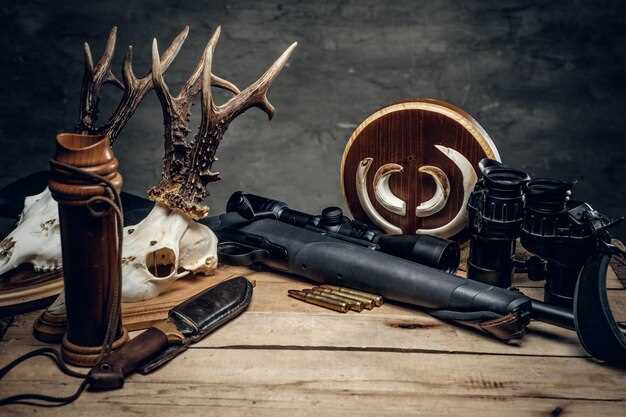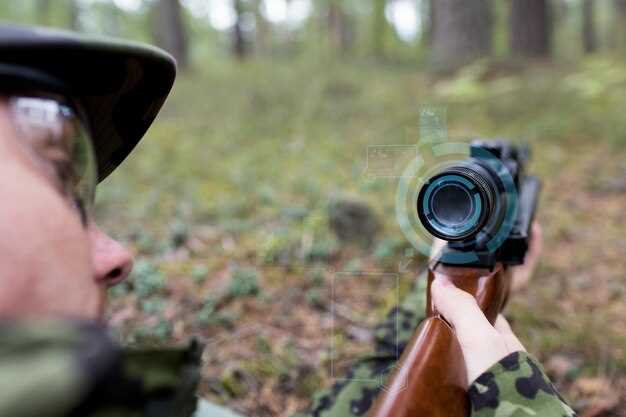Best Rangefinders for Bow and Rifle Hunting

When it comes to precision in hunting, having the right tools can make all the difference. A rangefinder, specifically designed for bow and rifle hunting, is an essential device that helps hunters accurately measure distances to their targets. This information is crucial, as it allows hunters to calculate shot adjustments, ensuring a successful and ethical hunt.
Modern rangefinders come equipped with advanced features such as angle compensation, ranging options for different weather conditions, and even ballistic calculations. Whether you are tracking game in the dense woods or open fields, selecting the right rangefinder can enhance your hunting experience dramatically. Understanding the key specifications and capabilities of each model is vital for making an informed choice.
In this article, we will explore the top rangefinders available on the market, focusing on their features, benefits, and suitability for both bow and rifle hunting. By the end, you will be equipped with the knowledge to select the best rangefinder tailored to your specific hunting needs.
Choosing the Right Rangefinder for Specific Hunting Needs

Selecting the right rangefinder is crucial for achieving accuracy in both bow and rifle hunting. Different hunting environments and scenarios require specific features in a rangefinder. When choosing, consider the type of hunting you will be engaging in and the distances you expect to encounter.
For bow hunting, a rangefinder that operates effectively within shorter distances, typically up to 100 yards, is ideal. Look for models with features such as angle compensation, which adjusts the distance to account for elevation changes, enhancing accuracy. Additionally, consider the size and weight of the rangefinder since these factors can affect your mobility in the field.
On the other hand, rifle hunters often need rangefinders with a longer range capability, sometimes exceeding 1000 yards. Features such as magnification and advanced targeting modes, like first target or shoot-through mode, can help in accurately determining distance even in challenging conditions. A rangefinder with ballistic capability also aids in providing the necessary data for long-range shots, factoring in environmental variables.
Weather resistance is another important feature. Both bow and rifle hunters may find themselves in adverse weather conditions, so investing in a rangefinder that is waterproof or fog-proof ensures reliability in all situations.
Ultimately, the best rangefinder for you will depend on your specific hunting style and conditions. Prioritize features that enhance accuracy and usability for your particular needs, ensuring a successful and rewarding hunting experience.
Understanding Rangefinder Accuracy in Various Conditions

Rangefinders are essential tools for both bow and rifle hunters, allowing precise distance measurement to target animals. However, their accuracy can vary significantly depending on environmental conditions. Understanding how these factors influence performance is crucial for effective hunting.
One of the primary factors affecting rangefinder accuracy is lighting conditions. In bright sunlight, rangefinders may struggle to provide accurate readings due to glare and reflections. Conversely, low light conditions, such as early morning or late evening, can also complicate readings, as the device may have difficulty picking up on the target. Choosing a rangefinder with excellent light-gathering capabilities can mitigate these issues.
Weather conditions play a significant role as well. Rain, fog, or snow can distort the laser beam emitted by a rangefinder, leading to erroneous distance measurements. Moisture in the air or on surfaces can scatter the laser, causing it to lose accuracy. Hunters should be aware of these conditions and consider using rangefinders specifically designed for wet weather performance.
The terrain and surrounding environment can also impact a rangefinder’s effectiveness. Dense woods or heavily vegetated areas can obstruct the laser’s path to the target, making it challenging to acquire a reading. In contrast, open fields allow for clearer measurements. It is beneficial for hunters to practice using their rangefinders in different environments to understand their limitations and capabilities fully.
Finally, the quality and specifications of the rangefinder itself are crucial. A higher-quality rangefinder typically possesses superior optics and better accuracy across varying conditions. It is advisable to look for devices with a longer maximum range and higher precision ratings to ensure reliability in more challenging scenarios.
In conclusion, understanding the various conditions that affect rangefinder accuracy is vital for any hunter. By being aware of environmental factors such as lighting, weather, terrain, and selecting the right device, hunters can significantly enhance their chances of a successful outing.
Features to Look for When Selecting a Rangefinder
When selecting a rangefinder, accuracy is the most critical feature to consider. A highly accurate rangefinder can significantly improve your shooting precision, whether you’re hunting with a bow or a rifle. Look for models that provide measurements within +/- 1 yard to ensure reliable results.
Another essential feature is the range capability. Different models offer varying maximum distances for measurement. Choose a rangefinder that meets your hunting needs, keeping in mind the typical distances you will be encountering while in the field.
Opt for a rangefinder with a fast measurement speed. Quick readings are vital, particularly in dynamic hunting situations where you may have only seconds to take a shot. Look for devices that boast a response time of less than one second.
Consider the display quality as well. A clear, easy-to-read screen enhances usability, especially in low-light conditions. Backlit displays are advantageous for early mornings or late evenings, ensuring visibility regardless of the time of day.
Long battery life is another factor to prioritize. A rangefinder that can last through extended outings without needing a recharge or battery change eliminates the worry of running out of power at a crucial moment.
Waterproof and fog-resistant features add durability and reliability, particularly in unpredictable weather conditions. A rangefinder that can withstand rain and moisture will be more dependable in various environments.
Lastly, consider additional features such as angle compensation technology. This feature is especially useful for bow hunters, as it factors in the incline or decline of the shot, ensuring the range is adjusted for the vertical distance to the target.


